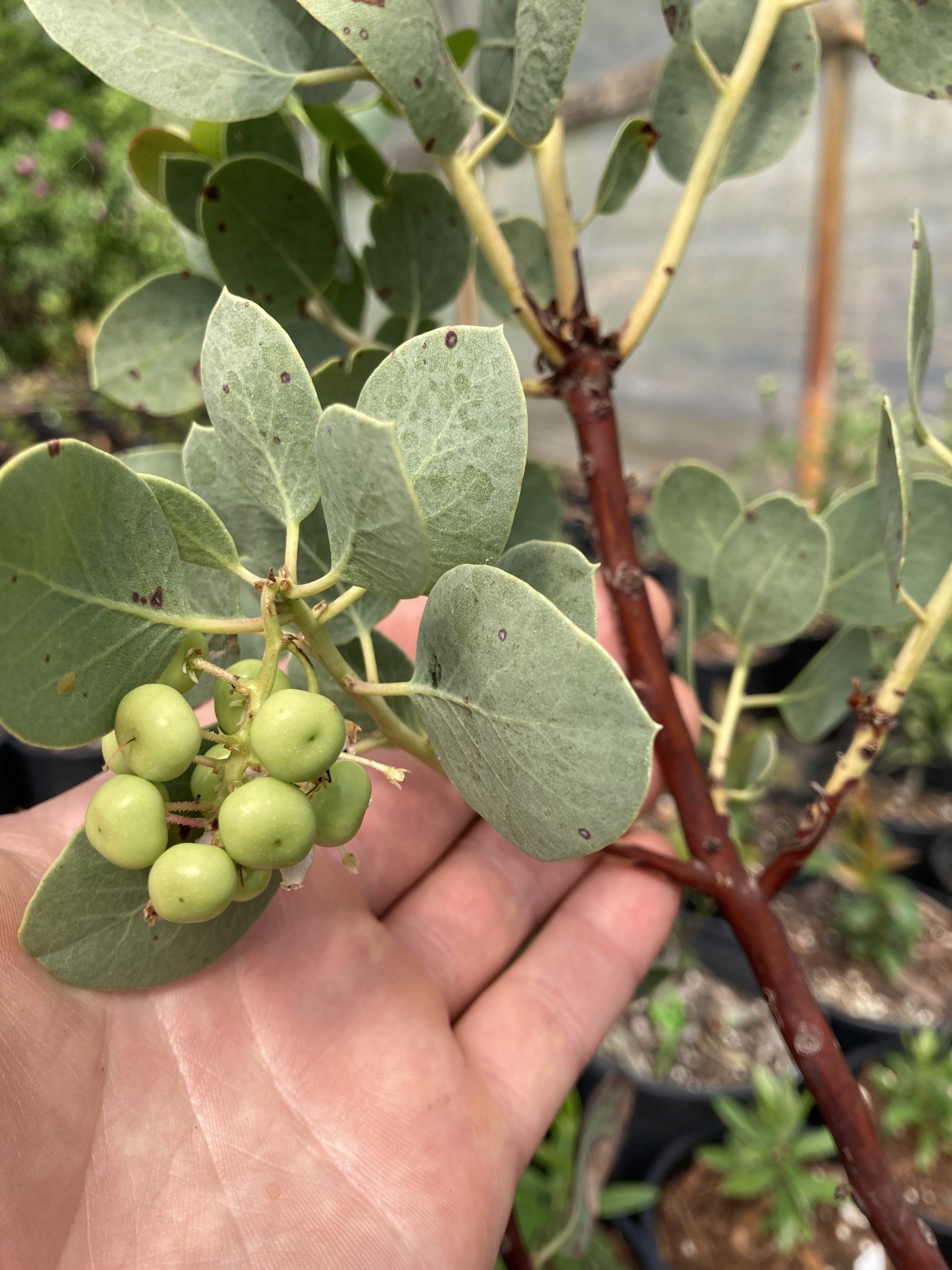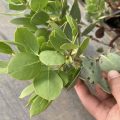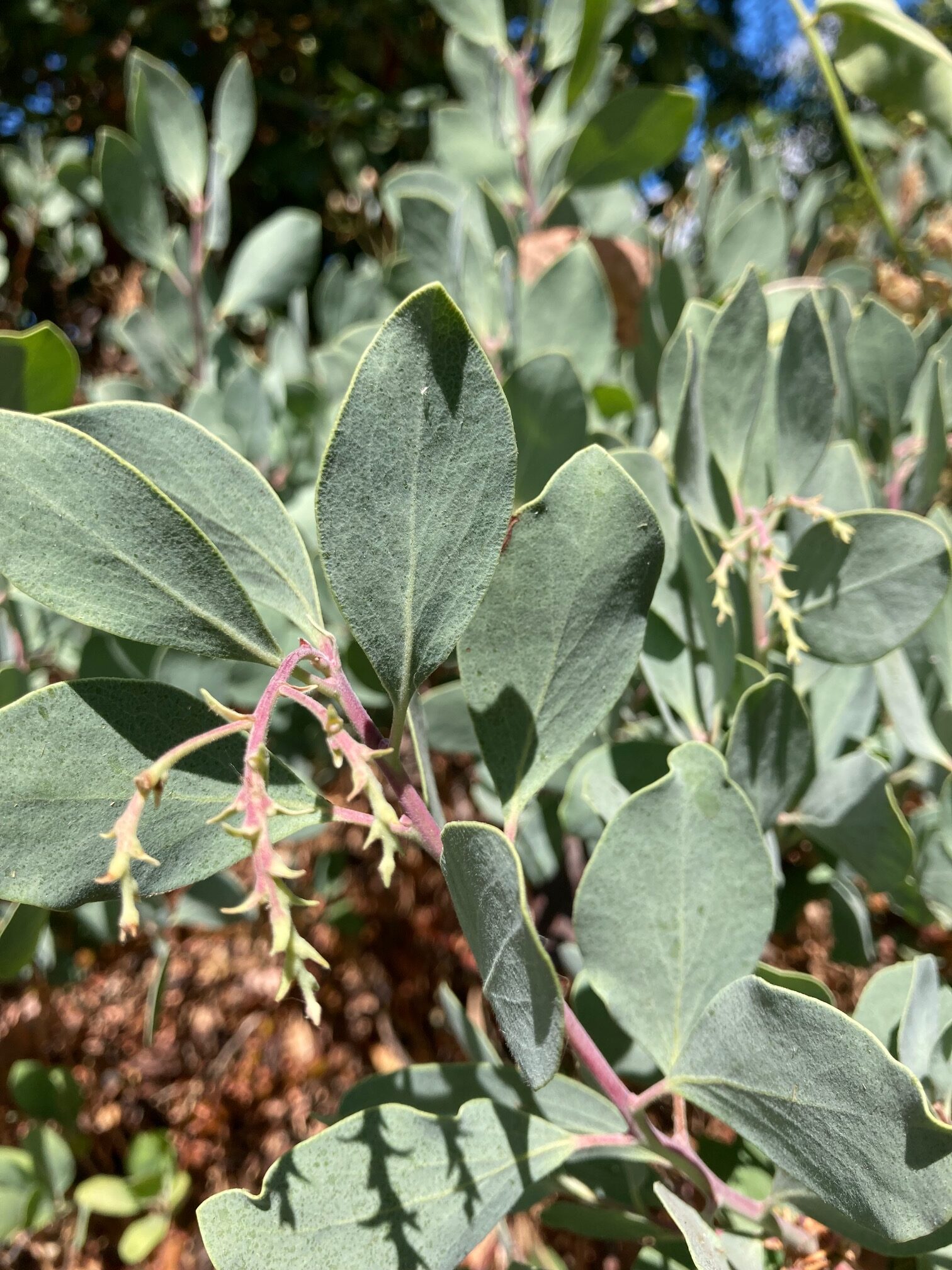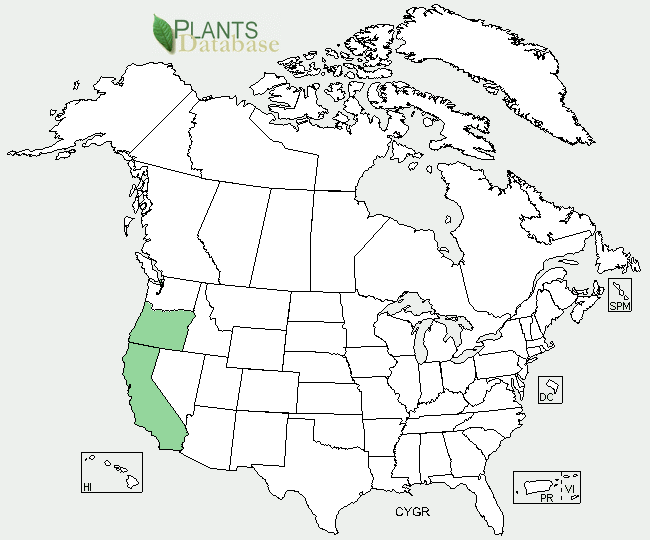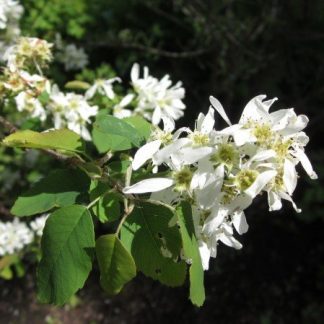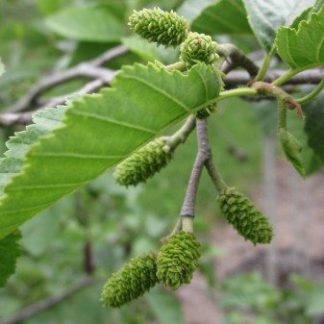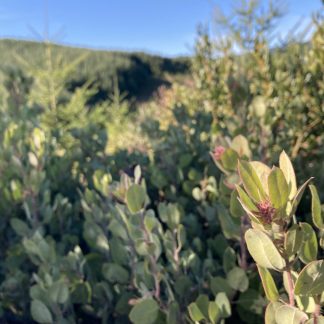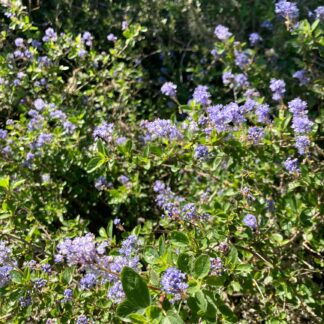Arctostaphylos viscida
sticky whiteleaf manzanita
Habit: an evergreen shrub with rich, red-brown, polished bark. Very much like other medium-sized manzanitas, Arctostaphylos viscida exhibits a dazzling intricate branch structure, yet its pale green to grayish foliage is quite unique. This shrub grows upright to a moderate or large size, reaching up to 16 feet in height. Simple, alternate, small leaves (1-2 inches long) born on short stems usually concentrate on higher branches, exposing the plant’s beautiful, twisty, exfoliated branching below. Leaves are entire, ovate to nearly round, and have both surfaces covered with waxy white dull bloom, which disappear with age. Bristle hairs, glands or pointy bumps can be found on the leaves of some specimen. Sticky, white and pink, urn-shaped flowers form open terminal clusters, and adorn the shrub from February to April. Druplets of fleshy, tiny, apple-like fruit come about in the summer. Glands spread over the flowers, fruit and, occasionally, leaves produce the sticky substance present on surfaces.
Ecology: whiteleaf manzanita grows in chaparral and burned forests as an early successional species. It is native from the southern end of Central Valley, California to southern Oregon, occurring mostly at Mediterranean climates and in the Sierra foothills at 500-5000 feet of altitude.
Growing conditions: this species favors sunny to partially shaded spots, and tolerates dry, rocky or serpentine soils. The bark of the plant exfoliates once a year, to allow for the next seasons growth. The intricate pattern of the branches is a consequence of manzanita’s flowering pattern. Whenever it blooms, a flower terminates the growth of the branch, and a vegetative shoot bellow the previous growth point, takes the lead. The new shoots usually take a different direction though, creating the twists and turns that gives manzanitas their exquisite form and structure.
Arctostaphylos viscida hybridizes with A. patula in the wild, as a result, the two species share many similarities, the later, however, has greener, glossy leaves and its fruits and flowers are not sticky. The leaves and stems of whiteleaf manzanita are quite unpalatable, therefore most animals prefer its fruits and seeds as a source of food. The apple-like fruits which originated the genus name “manzanita” (Spanish for “small apple”) can be used to make jelly and the Miwok, a Native American tribe from California, used them to make a cider.
Specs
Evergreen shrub
8.2-16.4 ft (2.5-5 m)
3-12 ft (0.9-3.7 m)
7 to 10

